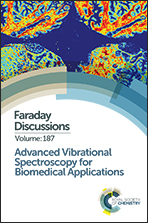Rapid characterisation of Klebsiella oxytoca isolates from contaminated liquid hand soap using mass spectrometry, FTIR and Raman spectroscopy†
Abstract
Microbiological monitoring of consumer products and the efficiency of early warning systems and outbreak investigations depend on the rapid identification and strain characterisation of pathogens posing risks to the health and safety of consumers. This study evaluates the potential of three rapid analytical techniques for identification and subtyping of bacterial isolates obtained from a liquid hand soap product, which has been recalled and reported through the EU RAPEX system due to its severe bacterial contamination. Ten isolates recovered from two bottles of the product were identified as Klebsiella oxytoca and subtyped using matrix-assisted laser desorption/ionisation time-of-flight mass spectrometry (MALDI TOF MS), near-infrared Fourier transform (NIR FT) Raman spectroscopy and Fourier transform infrared (FTIR) spectroscopy. Comparison of the classification results obtained by these phenotype-based techniques with outcomes of the DNA-based methods pulsed-field gel electrophoresis (PFGE), multi-locus sequence typing (MLST) and single nucleotide polymorphism (SNP) analysis of whole-genome sequencing (WGS) data revealed a high level of concordance. In conclusion, a set of analytical techniques might be useful for rapid, reliable and cost-effective microbial typing to ensure safe consumer products and allow source tracking.
- This article is part of the themed collection: Advanced Vibrational Spectroscopy for Biomedical Applications

 Please wait while we load your content...
Please wait while we load your content...